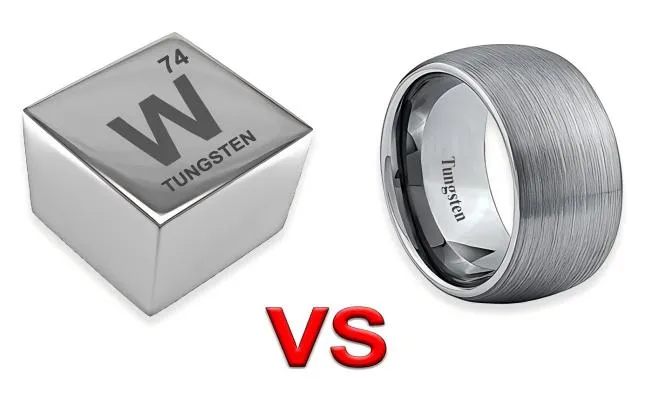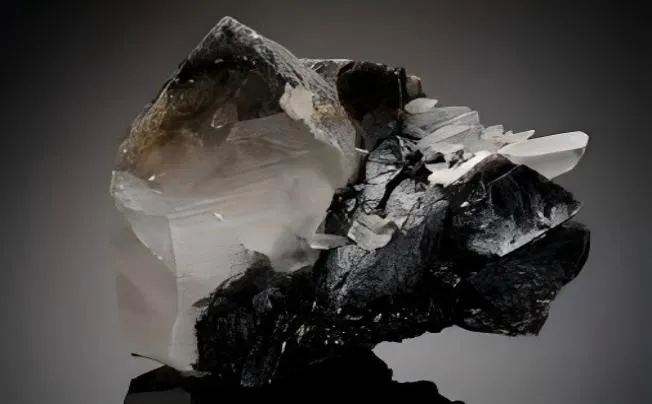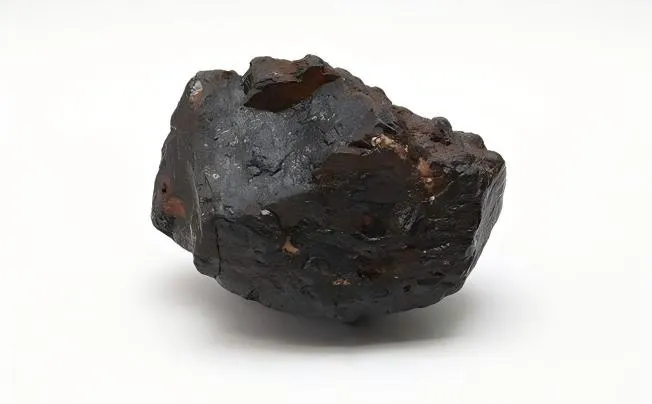With an atomic number of 74, tungsten is often found in its ore form, wolframite, and is prized for its high melting point of 3,422 degrees Celsius (6,192 degrees Fahrenheit), the highest of all metals.
What is Tungsten?
Tungsten, also known as wolfram, is a chemical element with the symbol W and atomic number 74. This metallic element is renowned for its exceptional properties, making it a valuable material in various industries. Tungsten is one of the densest and hardest elements on the periodic table, with a unique combination of physical and chemical characteristics that set it apart from other metals.
Basic Properties
One of the most striking properties of tungsten is its high melting point, which is the highest of any pure metal at 3,422°C (6,192°F). This property makes tungsten ideal for applications that require resistance to extreme heat, such as in the manufacturing of light bulb filaments and rocket engine nozzles. Additionally, tungsten has a high density, approximately 19.3 times that of water, which is comparable to gold and platinum.
This density contributes to its weight and heft, which can be both a benefit and a drawback depending on the application. Tungsten is also highly resistant to corrosion and wear, making it a durable choice for various industrial and consumer products.
Common Uses
Tungsten's unique properties have led to its widespread use in numerous industries. In the electronics industry, tungsten is used in the production of semiconductors and circuit boards due to its excellent electrical conductivity and thermal stability. In the aerospace industry, tungsten's high melting point and density make it suitable for components that must withstand extreme temperatures and pressures, such as turbine blades and heat shields.
Tungsten is also used in the manufacturing of cutting tools and abrasives, where its hardness and wear resistance are crucial. In the medical field, tungsten is used in radiation shielding and X-ray targets due to its high density and ability to absorb radiation.
Safety Concerns with Tungsten Rings
Physical Safety: A Double-Edged Sword
Tungsten rings are renowned for their exceptional durability and hardness, which are both a blessing and a potential concern. Tungsten carbide, the most common form of tungsten used in jewelry, ranks between 8.5 and 9 on the Mohs scale of mineral hardness, making it one of the hardest materials available for rings. This hardness ensures that the ring will resist scratches and maintain its polished appearance for years, which is a significant advantage over softer metals like gold and silver.
However, this same hardness can pose a risk in certain situations. In the event of a severe impact, such as a car accident or a fall, a tungsten ring can shatter rather than deform.
This shattering can result in sharp fragments that may cause cuts or other injuries, which is a critical safety concern that potential wearers should be aware of. Moreover, the inability of tungsten rings to deform under pressure can be problematic in emergencies.
Traditional metal rings, like gold or silver, can be easily cut off by emergency responders using specialized tools. In contrast, tungsten rings are extremely difficult to remove, which can delay necessary medical treatment.
This delay can be particularly dangerous in scenarios where rapid intervention is crucial, such as when a person's finger swells due to an injury or medical condition. For these reasons it is essential to consider the physical safety implications of wearing a tungsten ring, especially in high-risk environments or activities.
Despite these concerns, many tungsten ring manufacturers have developed safety features to mitigate the risks. Some rings are designed with a "fracture line" that allows the ring to break more predictably and safely in the event of a severe impact.
Additionally, some companies offer rings with a thin layer of a softer metal on the inside, which can help to reduce the risk of injury if the ring shatters. These innovations demonstrate the industry's commitment to addressing the physical safety concerns associated with tungsten rings, making them a safer option for many wearers.
Health Concerns: Allergies and Skin Irritation
While tungsten itself is generally considered hypoallergenic, the alloys used in tungsten rings can sometimes cause allergic reactions or skin irritation. Tungsten carbide is typically mixed with other metals, such as cobalt or nickel, to enhance its properties and make it suitable for jewelry.
Cobalt, in particular, is a common allergen that can cause contact dermatitis, a condition characterized by redness, itching, and inflammation of the skin. Individuals with known allergies to cobalt or nickel should exercise caution when considering a tungsten ring, as these metals can come into prolonged contact with the skin and potentially trigger an allergic reaction.
To minimize the risk of allergic reactions, some manufacturers offer tungsten rings that are cobalt-free or use alternative binders like chromium or titanium. These alternatives are less likely to cause skin irritation and can be a better choice for individuals with sensitive skin.
However, it is important to note that even these alternatives are not completely risk-free, as individual sensitivities can vary widely. Before purchasing a tungsten ring, it is advisable to consult with a dermatologist or conduct a patch test to ensure that the ring will not cause an adverse reaction.
In addition to allergic reactions, tungsten rings can sometimes cause mechanical irritation due to their hardness and smooth surface. Some wearers may experience discomfort or chafing, especially if the ring is not the perfect fit.
Proper sizing and regular maintenance, such as occasional polishing, can help to reduce the risk of mechanical irritation. If you experience any persistent skin issues while wearing a tungsten ring, it is recommended to consult a healthcare professional for advice and treatment.
Environmental Impact: Mining, Production, and Disposal
The environmental impact of tungsten rings extends from the mining and production processes to the eventual disposal of the rings. Tungsten mining, like the extraction of many other metals, can have significant environmental consequences.
The process often involves open-pit mining, which can lead to soil erosion, water pollution, and habitat destruction. Additionally, the use of chemicals in the extraction and refining processes can contaminate local ecosystems and pose health risks to nearby communities.
While some mining operations are more sustainable than others, the environmental footprint of tungsten mining is a valid concern for environmentally conscious consumers. The production of tungsten rings also has environmental implications.
Tungsten carbide is produced through a series of energy-intensive processes, including the reduction of tungsten ore and the sintering of tungsten powder. These processes require significant amounts of energy, which can contribute to greenhouse gas emissions and other environmental impacts.
However, advancements in manufacturing technology have led to more efficient and sustainable production methods, such as the use of renewable energy sources and the implementation of closed-loop systems that minimize waste. When it comes to disposal, tungsten rings present both challenges and opportunities.
Unlike some other metals, tungsten is not easily recyclable due to its high melting point and the difficulty of separating it from other materials. This can make it challenging to recover and reuse tungsten from discarded rings.
However, some jewelry companies offer take-back programs that allow customers to return their tungsten rings for proper disposal or recycling. These programs can help to reduce the environmental impact of tungsten rings by ensuring that the materials are handled responsibly and, where possible, reused in new products.







